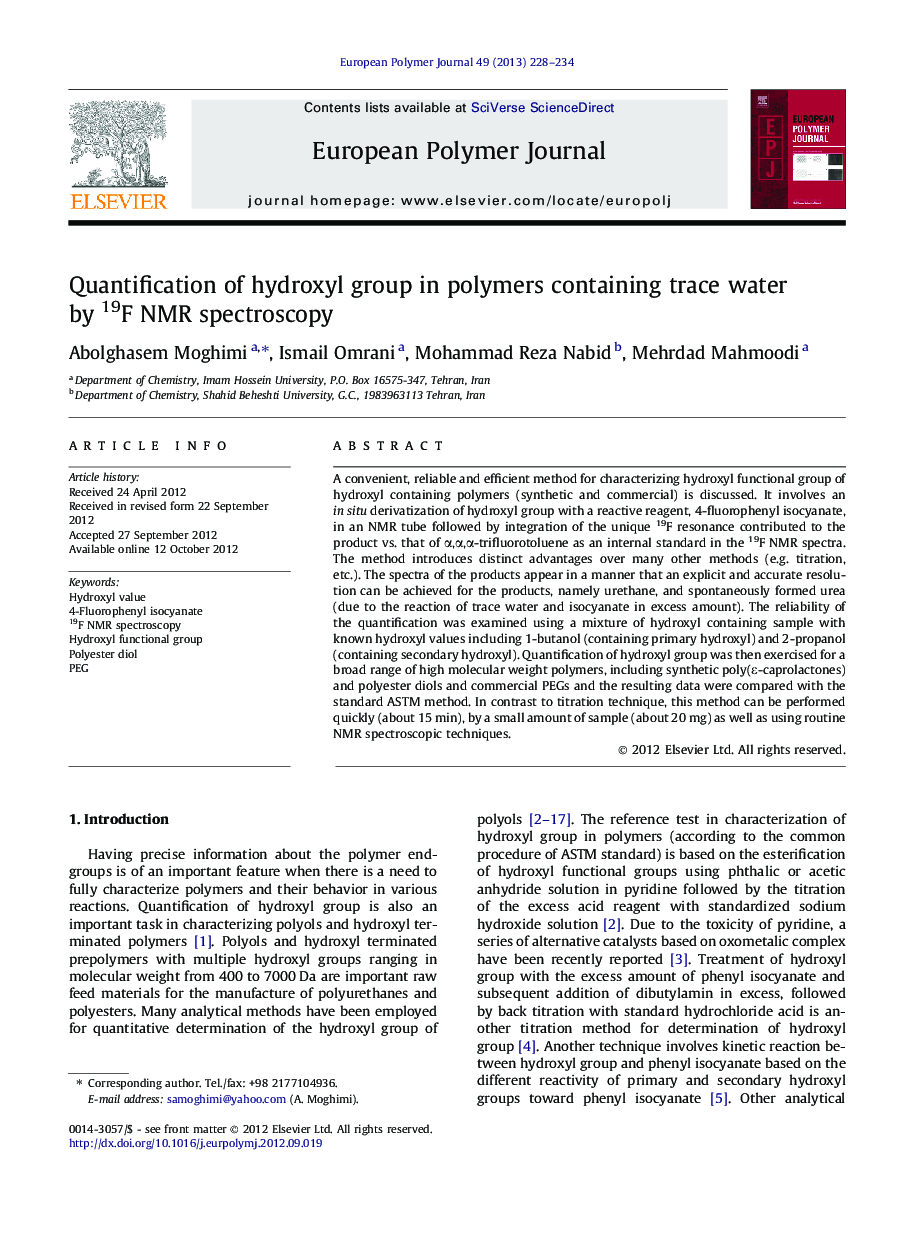| Article ID | Journal | Published Year | Pages | File Type |
|---|---|---|---|---|
| 1395894 | European Polymer Journal | 2013 | 7 Pages |
A convenient, reliable and efficient method for characterizing hydroxyl functional group of hydroxyl containing polymers (synthetic and commercial) is discussed. It involves an in situ derivatization of hydroxyl group with a reactive reagent, 4-fluorophenyl isocyanate, in an NMR tube followed by integration of the unique 19F resonance contributed to the product vs. that of α,α,α-trifluorotoluene as an internal standard in the 19F NMR spectra. The method introduces distinct advantages over many other methods (e.g. titration, etc.). The spectra of the products appear in a manner that an explicit and accurate resolution can be achieved for the products, namely urethane, and spontaneously formed urea (due to the reaction of trace water and isocyanate in excess amount). The reliability of the quantification was examined using a mixture of hydroxyl containing sample with known hydroxyl values including 1-butanol (containing primary hydroxyl) and 2-propanol (containing secondary hydroxyl). Quantification of hydroxyl group was then exercised for a broad range of high molecular weight polymers, including synthetic poly(ε-caprolactones) and polyester diols and commercial PEGs and the resulting data were compared with the standard ASTM method. In contrast to titration technique, this method can be performed quickly (about 15 min), by a small amount of sample (about 20 mg) as well as using routine NMR spectroscopic techniques.
Graphical abstractFigure optionsDownload full-size imageDownload as PowerPoint slideHighlights► A method for quantitative analysis of hydroxyl functional group. ► A small amount of sample. ► Synthetic and commercial prepolymer diols. ► In situ derivatization of hydroxyl group with 4-fluorophenyl isocyanate. ► Integration of the unique 19F resonance contributed to the product in the 19F NMR spectra.
